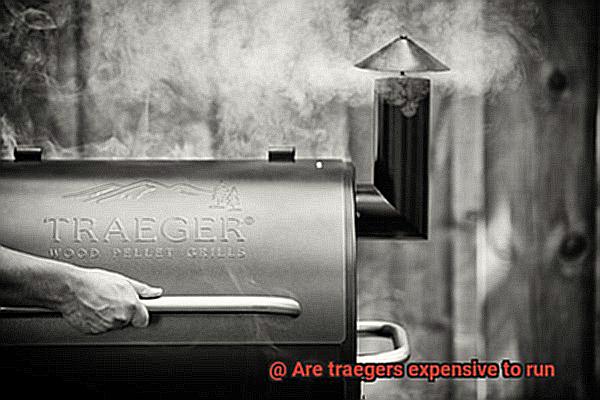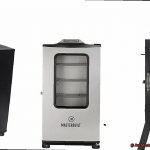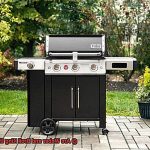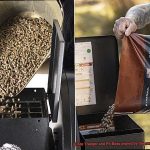Are you tired of shelling out a fortune just to grill up some burgers and hot dogs? Are you fed up with the high cost of propane or charcoal? If so, you’re probably wondering if Traeger grills are any different. After all, they promise the convenience and delicious flavor of a wood pellet grill without the hefty price tag. But are Traegers expensive to run?
In this blog post, we’ll dig deep into the world of Traeger grills and explore the true cost of operating one. From the initial purchase price to ongoing maintenance and fuel costs, we’ll break down every factor that contributes to the overall expense. We’ll also compare Traeger grills to other types of grills, so you can decide if they’re truly worth the investment.
But before we get into all that, let’s take a moment to appreciate the unique appeal of cooking with wood pellets. There’s something inherently satisfying about loading up the hopper with flavorful pellets and watching them ignite into a smoky blaze. And when it comes to taste, nothing beats perfectly charred meats and veggies infused with rich, smoky flavor.
So, are Traegers expensive to run? Buckle up and join us on this journey as we uncover the answer together.
Contents
Fuel Source: Wood Pellets
Traeger grills are renowned for their ability to use wood pellets as a fuel source. These small, cylindrical pieces of compressed wood made from sawdust and other wood byproducts offer a clean-burning and renewable option that produces a rich and smoky flavor in your food. While wood pellets may be more expensive than other fuel sources like charcoal or propane, Traeger grills are designed to make the most out of them.
Let’s take a closer look at the benefits of using wood pellets with your Traeger grill. Firstly, they are eco-friendly, made from waste products that would typically be discarded. Secondly, the unique smoky flavor provided by wood pellets is a major selling point for many grill enthusiasts. It gives food a distinct flavor that can’t be replicated with other types of fuel.
In addition to these benefits, Traeger grills are also designed to be efficient with their use of wood pellets. The hopper can hold up to 20 pounds of pellets, which can last for several hours of cooking time. The grill also has an electronic controller that regulates the temperature and amount of pellets used, so you don’t have to worry about constantly adding more fuel. This makes Traeger grills a convenient option for those who love to grill regularly.
However, there are some potential drawbacks to consider when using wood pellets with your Traeger grill. Firstly, they can be more expensive than other types of fuel, but this cost can vary depending on the brand and quality of wood pellets, as well as the region in which you live. Secondly, depending on where you live, it may be difficult to find wood pellets for your Traeger grill, which can be frustrating if you’re someone who grills regularly and relies on wood pellets as your primary fuel source.
Lastly, some more advanced models with features like WiFi connectivity or advanced temperature control systems may require more electricity usage, which could increase your overall expenses.
Cost of Wood Pellets
Although these pellets may cost more than other fuel sources, they offer a unique and delicious flavor that’s hard to replicate.
The price of wood pellets can vary depending on several factors, such as the brand, quality, and where you purchase them. On average, you can expect to pay around $1 per pound of wood pellets. However, don’t let this price tag intimidate you just yet. There are ways to save money on wood pellets without sacrificing taste.
One way to save money is to purchase in bulk. Not only will this lower the overall cost per pound, but it also means fewer trips to the store. Additionally, keep an eye out for discounts or promotions on wood pellets throughout the year. Many retailers offer deals on pellets during grilling season or holidays such as Memorial Day or Labor Day.
Moreover, investing in high-quality wood pellets can actually save you money in the long run. Cheaper pellets may contain fillers or additives that affect their performance and burn rate, leading to more frequent pellet replacements and ultimately higher costs. Opting for premium wood pellets made from pure hardwoods can enhance the efficiency and longevity of your Traeger grill, ultimately saving you more money over time.
Frequency of Use
If you’re wondering how often you can use your grill without breaking the bank, then you need to consider the frequency of use.
Traeger grills are designed to be used for long periods, making them ideal for frequent use. They are highly efficient and use very little fuel, with a 20-pound bag of pellets lasting up to 20 hours of cooking time. However, the cost of running the grill will depend on how often and for how long you use it.
To save costs, purchasing pellets in bulk is a smart decision. Bulk purchases significantly reduce the cost per pound, making it more affordable to run the grill regularly. Plus, buying in bulk is eco-friendly as it reduces packaging waste.
But remember, frequent use can lead to wear and tear on the grill, resulting in additional maintenance costs down the line. Regular cleaning and maintenance can help prolong the lifespan of the grill and reduce the need for costly repairs.
So, what’s the bottom line? The frequency of use is a critical factor when determining the cost of running a Traeger grill. While the cost of pellets is relatively low, frequent use can lead to additional maintenance costs. Nonetheless, with proper maintenance and smart purchasing decisions like buying in bulk, you can enjoy frequent outdoor grilling without breaking the bank.
Size and Model of Traeger
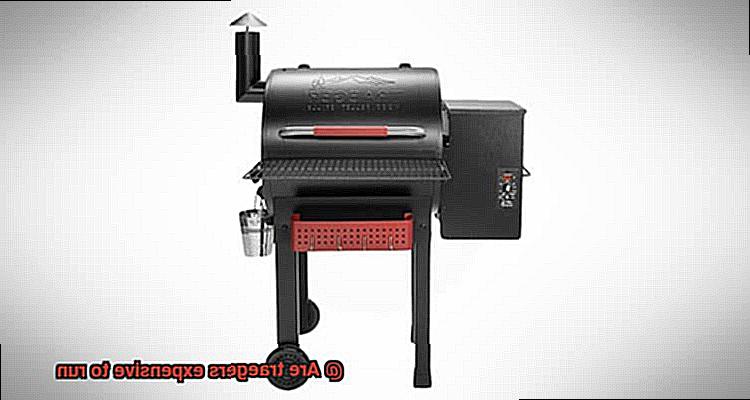
As an expert on the size and model of Traeger grills, I’m here to help. Let’s dive into how the size and model of a Traeger grill can affect its fuel consumption rate.
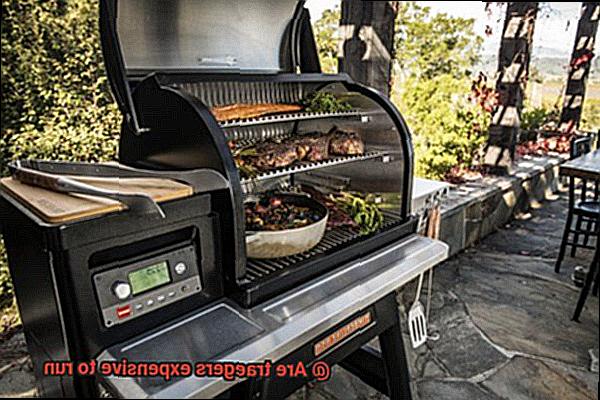
Size matters when it comes to fuel consumption. Larger Traeger grills offer more cooking space and versatility, but they also consume more pellets than smaller ones. For those planning on hosting big backyard barbecues frequently, the Traeger Pro 780 may be the perfect option. With its cooking area of 780 square inches, you can cook up to 34 burgers at once. However, keep in mind that it consumes around 2 pounds of pellets per hour when set to high heat.
On the other hand, if you’re someone who only grills for a small family or intimate gatherings, the smaller Traeger Scout might be a better fit for you. With a cooking area of 184 square inches, it consumes around 1 pound of pellets per hour.
In addition to size, the model of your Traeger grill can also impact its fuel consumption rate. The newer models, like the Timberline and Ironwood series, come with Wi-Fi connectivity and advanced temperature control systems that allow for precise cooking. However, these added features may result in higher pellet consumption rates. If you’re looking for less expensive options, older models like the Lil’ Tex Elite may consume less fuel but may not have all the advanced features.
Lastly, keep in mind that the quality of pellets used can affect how much it costs to run your Traeger grill. Higher quality pellets produce less ash and burn more efficiently, which can reduce fuel consumption rates. Cheaper pellets may have more fillers, which can clog the grill’s auger and increase fuel consumption rates.
Eco-Friendly Benefits of Traegers
Grilling is an enjoyable pastime for many, but it’s essential to consider the environmental impact that it can have. Luckily, Traeger grills offer a solution that satisfies both taste buds and eco-consciousness.
One of the main eco-friendly benefits of Traegers is their fuel source. Wood pellets are made from compressed sawdust and other wood waste materials, making them a renewable energy source. Unlike traditional grills that burn non-renewable resources such as charcoal or gas, Traegers rely on a sustainable and environmentally-friendly option.
In addition to being renewable, wood pellets also burn cleaner than other fuel sources. They produce less ash and smoke, which means they emit fewer harmful pollutants into the air. This makes Traeger grills a great option for those who want to grill without contributing to air pollution.
Traeger grills also offer energy efficiency, thanks to their digital controllers. These grills can maintain a consistent temperature with minimal energy waste. In contrast, traditional grills may require more fuel or energy to maintain a consistent temperature.
Here are some of the eco-friendly benefits of Traeger grills:
- They use renewable wood pellets as fuel.
- Wood pellets burn cleaner than traditional fuel sources.
- They produce less ash and smoke, reducing air pollution.
- Their digital controllers make them energy-efficient.
Maintenance and Care for Traegers
To ensure that your Traeger operates efficiently and lasts for years to come, regular maintenance and care is crucial.
The first step in maintaining your Traeger is simple: clean it after every use. Not only will this prevent grease buildup, which can cause fires and damage to your grill’s interior, but it’ll also enhance the flavor of your food. To clean your Traeger, start by removing any leftover pellets from the hopper, then use a grill brush to scrape off any food residue from the grates and interior walls. Next, remove and discard any contents in the grease tray. You may wash the tray with soap and water or replace it with a disposable one. Finally, wipe down the exterior of your Traeger with a damp cloth and dry it thoroughly.
Occasional maintenance tasks are also necessary to keep your Traeger running smoothly. One of these tasks is cleaning the auger, which feeds pellets into the firepot. Any blockages or damage to the auger can affect the grill’s performance. Cleaning it is straightforward – detach it from the motor and remove any debris using a long brush or compressed air.
Another maintenance task is checking and replacing gaskets when necessary. Gaskets provide a seal between the lid and grill body, preventing heat loss and ensuring even cooking temperatures. Over time, gaskets can become damaged or loose, leading to leaks and inefficient heating. To check your gaskets, run your hand along the seal while the grill is hot – if you feel any heat escaping, it’s time to replace them.
To summarize:
- Clean your Traeger after every use.
- Check and clean the auger periodically.
- Check and replace gaskets when necessary.

Advantages of Using a Traeger
If you’re a true grilling aficionado, then you know that the right grill can make all the difference. That’s where Traeger grills come in. These innovative grills have been taking the grilling world by storm in recent years, and for good reason. As an expert on the subject, I can tell you that there are several advantages to using a Traeger grill.
First and foremost, Traeger grills use wood pellets as fuel instead of propane or charcoal. This seemingly small detail can actually result in significant cost savings over time. While the initial cost of a Traeger grill may be higher than traditional grills, the long-term savings on fuel costs make it a more cost-effective option in the long run. Plus, using wood pellets infuses your food with a rich, smoky flavor that simply can’t be replicated with other fuels.
But cost savings aren’t the only advantage of using a Traeger grill. They’re also incredibly convenient. With features like digital temperature controls and automatic pellet feeders, Traeger grills are designed to be easy to use and maintain consistent temperatures throughout the cooking process. This means that you can spend less time monitoring your grill and more time enjoying your food with friends and family.
When it comes to flavor, Traeger grills truly shine. The wood pellets used as fuel infuse your food with a unique smoky flavor that simply can’t be achieved with propane or charcoal grills. And with a variety of different wood pellet flavors available, you can experiment with different combinations to create truly unique dishes that will impress even the most discerning palates.
Finally, durability is another key advantage of using a Traeger grill. Unlike traditional grills that may require frequent maintenance and replacement parts, Traeger grills are built to last and require minimal upkeep. This means that you can enjoy your Traeger grill for years to come without having to worry about costly repairs or replacements.
Disadvantages of Using a Traeger
If you’re considering purchasing a Traeger grill, it’s important to be aware of some potential drawbacks. As an expert in the world of grilling, I’ve done some research to provide you with a comprehensive list of the disadvantages of using a Traeger.
Firstly, let’s talk about cost. Traegers can be quite expensive upfront, and they require specialized wood pellets for fuel. While Traeger offers their own brand of pellets, they can be costly, and frequent replacement is necessary if you plan on using your grill regularly.
Another disadvantage to consider is that Traegers may not be as versatile as other types of grills. While they excel at smoking and slow-cooking meats, they may not be the best option for grilling burgers or steaks. Furthermore, some people find that Traegers don’t get hot enough to sear meat properly, which can be frustrating if you’re looking for that perfectly charred crust.
It’s also worth noting that Traegers can be quite heavy and bulky, which can make them difficult to move around or store when not in use. If you have limited outdoor space or need to transport your grill frequently, a Traeger may not be the most practical option for you.
Despite these potential drawbacks, many people still find that the benefits outweigh the disadvantages. Traeger grills are known for their ease of use and consistent cooking results thanks to their digital controls. Additionally, the variety of wood pellet flavors available allows for unique and delicious flavor profiles in your cooking.
EJqllBPDM18″ >
Conclusion
In summary, Traeger grills offer a unique and mouthwatering way to cook your favorite meals. Although the initial cost may seem steep, the long-term savings on fuel and ease of use make them a wise investment for grill enthusiasts. The use of wood pellets as fuel not only imparts delicious smoky flavors but also offers environmental benefits by utilizing renewable energy sources and producing fewer harmful pollutants.
When contemplating purchasing a Traeger grill, it’s crucial to consider the size and model that fits your needs best, along with the cost of wood pellets and frequency of usage. Additionally, routine maintenance is vital to ensure efficient operation and extend the life of your grill.
While there are some potential drawbacks to using a Traeger grill, such as higher upfront costs and limited versatility compared to other types of grills, many people find that the advantages outweigh these disadvantages. Ultimately, it depends on personal preference and what you value most in your grilling experience.

